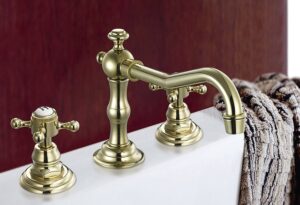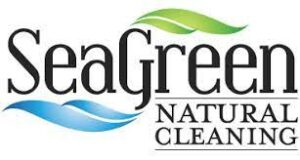
Image by Tony Zhu from Pixabay
Water Faucet Care
Bathroom and kitchen faucets come in all sizes and shapes and finishes. Choosing the style and finish depends on individual preference. When deciding to change out your faucets I would take in consideration if you have a well and if the water is hard or not.
With new technology, at least one manufacturer has developed an easy to clean shower head that’s made to resist the buildup of mineral deposits. This feature is especially beneficial for home owners with hard water who habitually need to clean their spray heads to remove the mineral buildup. The faucet’s finishes are long lasting, resistant to tarnish and corrosion.
I clean for a living and what frustrates me is water spot marks on the faucets. This usually happens when you have a well. For complete cleaning instructions always read the manufacturers guidelines in the manual if you have one, if not go on their website. The manufacturers name is usually on the faucet.
Finish Care Instructions
Easy maintenance
- Wipe dry after each use with a soft dry cloth such as a microfiber cloth to prevent water spotting and mineral build-up.
- Clean and wax regularly. See below on how to make natural wax. Otherwise, clean with a mild soap and water, then apply the wax.
1 cup linseed oil
4 tbsp. carnuba wax (available at automotive stores and available online)
2 tbsp. beeswax
1/2 cup vinegar
Put ingredients in top half of a double boiler or saucepan. Heat slowly until wax has melted. Stir, and pour into a heat resistant container. After wax has solidified, rub it on the faucets with a lint-free cloth. Saturate a corner of a cotton rag with vinegar and polish the wax to a deep shine.
And a few important cautions….
- Avoid all abrasive and aggressive chemicals
- Avoid ammoniated products ( window cleaner, tile cleaner, etc).
- Avoid bleach
- Do not use abrasive cleaning pads
- Do not allow water to come into prolonged contact with faucet surface, wipe down after each use.
- Do not allow water to collect at base of faucet
Chrome
Chrome or what is known as Chromium plating became popular in the 1930’s and continues to be one of the most popular finishes you will find. It is versatile, traditional and contemporary and economical. Chrome is a sophisticated tarnish-resistant finish. Solid brass fixtures are electroplated with chrome to provide a finish that lasts. Like brass, however, chrome requires frequent cleanings to maintain its shine.
- Follow the “All Finishes” recommendations listed above.
- You can mix up half white vinegar to water in a spray bottle
- Follow the “All Finishes” recommendations listed above.
- If not cared for regularly, Nickel finishes may oxidize and require a stronger cleaning agent
- Wash the item with a mild detergent in warm water. Rinse thoroughly and dry with a soft lint-free cloth.
- For stubborn stains you can make a paste of baking soda and water. Place the baking soda in a plastic container and add just enough water to make the paste. Cover the item with the paste and allow to dry. Run under warm water and buff dry with a soft-lint free cloth.
Stainless Steel
Stainless steel is a combination of steel alloys and chromium (chrome). It shines like silver when new but its appearance can dull over time. With proper care and maintenance, though, this corrosion and rust resistant finish can last a lifetime.
- Follow the “All Finishes” recommendations listed above
- You can use half white vinegar to water in a spray bottle
- Follow the “All Finishes” recommendations listed above.
- Gold is soft. Avoid abrasive cleaning agents, rough cleaning cloths and vigorous cleaning action.
- Follow the “All Finishes” recommendations above
- Avoid all products designed to remove tarnish or rust, and contain hydrochloric, hydrofluoric, and/or phosphoric acid or caustic agents
- Avoid scouring pads
- Follow the “All Finishes” recommendations listed above
- Avoid all abrasives
- Follow the “All Finishes” recommendations listed above
-
Pour 1 tbsp. of salt into a bowl and add 3 qts. of warm water to the bowl. Salt is a safe, natural cleaning solution that eliminates hard water spots without affecting the bronze’s surface.
-
Dip the toothbrush’s bristles into the cleaning solution and gently brush the bronze surface.
-
Rewet the toothbrush in the cleaning solution as the bristles become dry, and continue brushing in a circular motion to eliminate hard water spots.
-
Wet a soft cloth with warm water and wipe off the cleaning solution from the fixture.
-
Rub the oil-rubbed bronze surface with a soft cloth to remove moisture.
TESTING THEIR METALS Aside from style and features, what separates good law, tub or shower faucets from the not-so-good is the material they’re made of. Start by checking out the body, which encompasses the spout and controls. Solid-brass bodies last longest and require the least care, especially with hard water, which corrodes lesser metals. At $150 or so to start, these faucets also cost the most. If you aren’t sure whether a fitting is solid brass, pick it up. It should feel heavier than other units.Faucets with die-cast zinc-alloy bodies cost less (typically starting at about $70) and deliver good durability. Zinc is the metal beneath most brass- and chrome-plated fittings. Because zinc corrodes when it contacts water, these faucets must be replaced when the plating wears off. Stay away from low-end faucets with plastic bodies. Though their $50 entry price might be appealing, plastic simply doesn’t hold up. Finish is another crucial choice that determines not only how a faucet looks but also how easy it is to maintain. An electroplated chrome finish on a brass or zinc faucet looks good and lasts. If you opt for the warmth of natural brass, you’ll avoid frequent cleanings with one of the proprietary lifetime finishes that block out oxidation.
” Happy Cleaning “
Free Estimate PDF
Let's clean house!
Call 203-710-3188 today!

